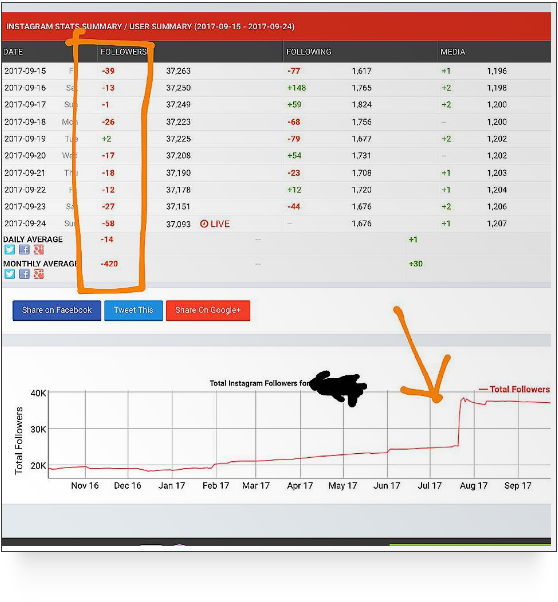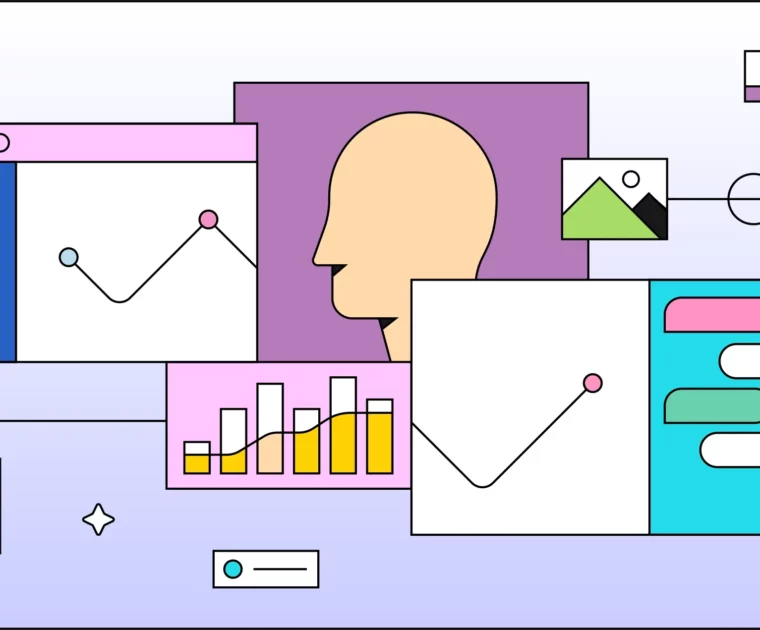Whether you’re the most popular girl in school, an international celebrity, a Fortune 500 company, or the local mom and pop shop, the size of your social media following says something about your trustworthiness and your relevance. But many brands and marketers are finding out that the sizable audiences of social media influencers who have fake followers don’t necessarily convert.
Thanks to a recent expose by the New York Times, the issue of fake followers and automated bots has been a hot topic in the world of social media marketing in recent months
We talk all the time about how a large following is not the same as an engaged following, and having a smaller following is not the same as getting a small response from that following. Micro-influencers – those with smaller, more concentrated (usually niche) followings – are becoming more and more popular. A big part of that is because smaller audto their legitimacy. While it is just as easy to fake a small following as it is a large one, the best micro-influencers have curated a dedicated following of genuine accounts, and feature far fewer fake accounts than larger influencers.
What Are Fake Followers?
Fake followers are accounts created by a company or individual that do not belong to a real, individual human being. They’re dummy accounts, usually created by companies that then sell these “fake followers” to individuals to help boost their follower count.
Some social platforms actually allow the use of “bots”. Bots are automated services that help boost an account’s engagement, reach, or following. As Twitter allows much more automation within its terms of use, these bots are much more prevalent there. Bots typically come in one of three forms:
- Scheduling bots: These bots send out certain tweets at set times throughout the day. These are not always a bad thing though. For instance, Big Ben – the landmark clock in London- has a twitter account that simply tweets out the word “BONG” on the hour every hour, just like the clock itself.
- Monitoring bots: These bots keep watch over other accounts and then send out their own tweets based on their activity. Again, these can sometimes be harmless, but they can also simply be vessels of regurgitation that attempt to populate fake accounts with relevant content.
- Amplification bots: These bots are the biggest culprits of these fake tactics as they work to retweet, follow, or like tweets sent out by clients who pay money for this service. Using these types of bots, social media users can easily appear much more popular and influential than they really are.
So, why are people using them?
If these bots and fake followers are so deceitful, then why are people using them to grow their social media followers in such large numbers? It’s simple – large followings they make people look like influencers, and influencers look like celebrities.
And brands keep taking chances on influencer marketing because the real influencer get amazing results. They can deliver an ROI that not many other platforms can deliver.
That NYT Exposé
The New York Times estimates that nearly 15% of Twitter users – as many as 48 million accounts – fall into the category of “fake accounts”. There are nearly 60 million fake accounts on Facebook, the world’s largest social media network.
Fake followers is not a new phenomenon, but the New York Times’ exposé made it a conversation brands and marketers had to have because tens of millions of businesses are using social media as a marketing channel.
The news broke right in the heat of the current battle against fake news and political manipulation that is taking place on social networks. The revelation that influencers are using fake followers was met with shock and anger by many readers because people didn’t realize some were actually copies of real people, who had no idea these kinds of accounts existed.
People were seeing their own photographs, names, hometowns and personal information being used for accounts that were promoting everything from insurance companies, to pornographic materials.
OPPORTUNISTIC AND PROBLEMATIC
The exposé focused mainly on one specific company – Devumi. This company had been selling fake followers in their millions to Twitter, YouTube, Soundcloud, and LinkedIn users across the web.
As we mentioned before, because of the lax rules surrounding automation on Twitter, this is often the most popular platform to engage these kinds of services. Their rules on automation allow for many forms of this technology within their platform including automated retweeting, duplicate accounts and scheduled tweeting. But, Twitter’s Terms of Use are vague about the kinds of accounts you’re not allowed to create:
“You may not create and/or automate multiple accounts for duplicative or substantially similar use cases. However, automating multiple accounts for related but non-duplicative use cases is permitted.” (Twitter Automation Rules).
Pair this with Devumi’s promise that their service is “100% Safe and there is no risk of getting your account suspended”, and you can see why it is so easy to get away with these kinds of tactics.
NOT REALLY A BIG SURPRISE
While many members of the general public were quite taken aback by the revelation of fake followers and automated bots, in the digital marketing world, this has been an issue for a very long time. Marketers nowadays are well-versed in how to spot and avoid the kinds of accounts that buy followers instead of attracting them organically.
These accounts provide little to no value to the brands that partner with them, as they aren’t reaching the kind of audience they need to make an impact. Because of this, learning how to identify these fake influencers is an essential tool for anyone delving into the world of influencer marketing. And we’re here to help you do just that.
How to Identify Fake Followers
Now, don’t worry too much about the abundance of fake followers out there – everyone on social media is bound to have a couple hanging around their follower list. The real problems arise when these bots take up large percentages of people’s following. But spotting them isn’t as difficult as you might think.
NUMBERS TALK
The easiest way to spot if an account is real or fake is to look at simple numbers. For example, the average account on Twitter follows around 200 other people. Most fake accounts will instead follow thousands, without many followers of their own.
If you take a look through an influencer’s followers and notice that many of the accounts following them have these kinds of unbalanced numbers, some serious red flags should be going up.
SUSPICIOUS ACTIVITY
One of the more obvious signs of a fake account is the kind of suspicious activity that usually follows them around. If the account is sharing or retweeting content in a wide range of languages, or on a rather “eclectic” mix of topics – beware.
Of course, there are some multilingual people out there with a broad range of interests, but you can usually tell whether the tweets going out are legit.
TIMING IS EVERYTHING
When looking at the influencers statistics, take note of when they gained their followers. Genuine influencers will have gradually attracted new followers over time as their account grew and gained popularity. If someone has bought fake followers, then there would be a sharp jump in follower numbers at specific times.
To look into this in detail, you’ll need to use a third party tool. If you’re not working within a dedicated platform like ours, there are a few free options out there that you can comb through to find these details.
The above image is a screenshot of an account search on SocialBlade. This service will show you how many followers an account has gained and lost over time. In the above example, there are two big signs that this account has bought followers.
In the graph at the bottom, you can see a sudden surge in followers in July 2017. It is very rare for there to be a genuine reason for this kind of increase, although it can sometimes happen. If an account is featured on the explore page on Instagram, or mentioned by a much larger account for example. But, if we pair this with the table above, it soon becomes clear what is going down.
The account is regularly losing followers every day. This is most likely because of Instagram’s crackdown on fake accounts. They are constantly going through all the accounts on the platform and deleting any that show suspicious or “bot” activity. So, any account that is regularly losing followers like this has likely bought fake ones that are now being found out by the platform itself.
POST ENGAGEMENT
Another metric you need to consider is what kind of engagement the account is getting in relation to its follower count. For example, if an account has over 1 million followers, but only gets 100 likes on each post – something fishy is definitely going on there.
Also, keep a close eye on the accounts that are interacting. The influencer may have bought likes/ comments as well as followers. So, if you notice that the majority of engagement is always coming from the same source, or that the account names are all random strings of letters/ numbers with no profile picture – steer clear.

Here’s Why Fake Followers and Influencer Fraud Are Such a Problem
But what’s the big deal about people buying these fake followers and engagements? It’s making them appear more popular, sure – but is it really hurting anyone?
Well, the short answer is yes. It’s hurting the businesses and brands that work with them, and it’s hurting genuine social accounts as well.
THEY DON’T PROVIDE THE REACH/ INFLUENCE THEY PROMISE (OR THAT YOU NEED)
The reason brands work with influencers is to increase brand awareness amongst the influencer’s followers. If those followers are actually just automated programs, then they are doing the brands they partner with a disservice.
While it may appear that you’re getting your brand message out there to thousands of people on social media, the majority of those people are not real. So, they will never convert to sales or raving fans. Which, let’s face it – is the final goal of any marketing campaign.
HARMFUL BRAND ASSOCIATIONS
There is also the danger that if your content is then shared by these fake followers, that your brand could be associated with some of the other brands posted about on that account. You could find yourself sharing social space with pornographic images, political statements, and other messages that can hurt your image and credibility.
HARMFUL TO THE ORIGINAL ACCOUNTS
As well as how this would all affect businesses, the NYT expose focused heavily on the human aspect of the issue, and how some of these fake accounts are essentially stealing people’s identity on social media. In order to appear more legitimate, a lot of these bot accounts are copying an existing users profile picture, name, hometowns and bio.
Some of these instances even included the cloning of minor’s accounts, which then proceeded to share pornographic images, and a whole range of other non age appropriate material.
How to Avoid Influencers Who Are Faking It
We know a company’s online presence is about as important today as a business card and Yellow Pages listing was 15 years ago. So, let’s look at how businesses can avoid paying fake influencers to push out content to non-existent followers.
Again, everybody has some fake, abandoned, cloned, or bot accounts following them. That’s not the problem. Here, we’re talking more about influencers who are padding their accounts by more than 15 percent with potentially fake followers.
RESEARCH YOUR INFLUENCERS
Before working with any influencer you find, conduct a thorough audit of their accounts. This includes follower counts, engagement rates, and their growth rate. All these things can help you to determine whether working with a particular influencer will be a worthwhile investment for your business or not.
This, takes time and effort. There’s a lot of data you will need to comb through, and not all of it is easily available. If you don’t want to pour a large portion of your time into this step, you might be better off working with a dedicated platform like TheShelf.com.
USE A DEDICATED PLATFORM
Using a platform that is dedicated to finding the best influencers and brand advocates is the easiest way to ensure you are only working with the kinds of accounts that are really going to benefit your business.
The Shelf helps to match you with the best influencers for your campaign. We give you snapshots of relevant posts they’ve done before, and the platform delivers key insights into their vanity metrics to help you see their growth rate, along with their posts statistics. And, with access to more than 140 million profiles on our platform from users in key markets like the U.S., UK, Brazil, and Australia you’ll be able to find the perfect partnership you’ve been looking for.
Conclusion
We can all acknowledge that the rise of automated services and fake influencers is bad for the influencer marketing business. But there’s no reason to run screaming and panicking just yet. Most platforms are really getting into crackdown mode right now against these kinds of activities, hoping to stop them in their tracks before too much damage is made.
The majority of legit influencers are working hard for brands and their campaigns, getting branded messages seen, and converting strangers to followers for brands large and small. Influencer marketing is still going strong, and will continue to do so for a long time yet.







